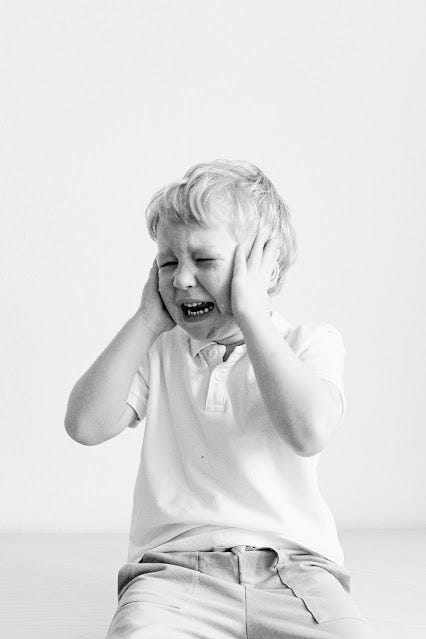Why is addressing problems in psychology necessary? Let’s find out.
I read an article from Psychology Today which was written by Noam Shpancer way back in June. It stressed the limitations of psychology in treating its patients’ psychological problems.
Moreover, the article pointed out the inconsistencies in the therapeutical sessions and the way we misunderstand psychology. As a result, the use of medications for treating psychological problems has adverse effects on an individual’s brain chemistry.
Sometimes, it can also create hallucinations and dilemmas, resulting in unsuccessful treatments. However, Dr. Shpancer described the causes that weren’t related to the patients’ brain chemistry but the effects of society.
Our understanding of psychology, primarily driven by biological aspects, is misleading. Besides, our one-dimensional approach towards therapeutic sessions has caused many turmoils already.
Therefore, we need to understand that our brain chemistry is also affected by our environment. Most importantly, society wants us to conform to its norms of the psychological process that inhibits us from thinking otherwise.
In other words, the inability of psychology to deal with psychological problems is due to the negligence of sociological aspects.
As a result, addressing problems in psychology and the effects of social norms is necessary. Hence, society has a huge role to play in influencing patients’ psychological problems.
Here, we are going to discuss the ways through which problems in psychology could be addressed.
You can also watch the video below by Nick Brown from TEDxRhodes about the limits of scientific psychology.
The significance of a change in addressing the problems in psychology:
Do you think psychological problems can be easily rectified by examining brain chemistry?
If you do, then you are wrong.
You must have heard about antidepressants. Yes, the medicines prescribed by doctors and medical professionals for dealing with depression.
Many of us have taken them once in our lifetime, and some might still be under a similar prescription. Besides, it helps us deal with depression by improving our chemical imbalance of serotonin. However, that is what we are forced to believe.
In other words, depression is not the result of the imbalance of serotonin in our brain. Moreover, the belief that medicinal drugs will improve the imbalance of this chemical is also misleading.
These drugs help reduce the symptoms responsible for depression. It is similar to addressing the symptoms of fever before the onset of a disease. However, it doesn’t mean it has cured the disease. All it does is reduce the symptoms such as fever or other physical ailments.
Likewise, these medicinal drugs do not curb the depression but its causes. Hence, it is sensible to say that these do not help in curing our depression.

But then the question arises, “Why do doctors and psychologists prescribe these antidepressants?”
The reason is that our ways of addressing problems in psychology solely depends on the empirical evidence that science demands. However, we seldom possess any evidence that could prove the effects of society on a child’s brain chemistry.
As a result, the antidepressants reduce the symptoms but not the sources of depression that vary with individuals.
What are the ways through which we can address the psychological problems:
For every problem, there is a solution.
Well, let us take the example of DSM, also known as the Diathesis-Stress Model. It is a tool to understand patterns behind psychological problems such as anxiety, depression, and schizophrenia.
It describes a relation between the vulnerabilities of a child in his growing years concerning the stress levels. In other words, some children are not as resilient to vulnerabilities as the rest and succumb to stress. Hence, such children are prone to psychological problems.
The neuroscientists described it as both genetic and environmental disorders that lead to a tendency to suffer from a condition.

However, in recent years, the study of DSM has only considered genetic problems and neglected the environment. Besides, the social aspects are counted in the effects of increased stress levels.
It is where we are mistaken, as a society also plays a role in psychological problems. The vulnerabilities are the result of insecurities concerning the social norms and expectations.
When society expects the child to behave in a certain way it leads to insecurity or vulnerability, causing stress.
Hence, we must take into account the social aspects as causes rather than effects. Above all, we must adopt a therapeutic exercise for people and help them understand the effects of social pressure.
However, there is also another solution that can address this problem effectively.
Why is the theory of ‘Jerome Wakefield’s Harmful Dysfunction’ significant:
The above example of DSM has described the limitations of psychological treatments.
However, there is another way through which we can address the problems in psychology from a different perspective. Besides, it is a good alternative to psychological treatments.
In the year 1995, a Rutgers University professor Dr. Jerome Wakefield proposed a model of harmful dysfunction. It was proposed in response to the limitations of DSM
The term ‘harmful’ is the social and cultural judgment of an individual. The term ‘dysfunction’ is the inability of a trait to perform its evolved function. In this model, he states that an individual’s traits can be biologically dysfunctional but socially acceptable or socially unacceptable but biologically functional.
However, these dysfunctional traits are not illnesses. Therefore, they are acceptable from a specific point of view while unacceptable from the other.
For instance, a scar in a body is biologically dysfunctional but socially acceptable. Likewise, the tendency of apathy and pain is socially unacceptable but biologically functional.
This model divides the psychological problems into different categories:
1. Addressing psychological problems concerning the aging process:
The diseases or disorders such as Arthritis and Alzheimer’s are the results of the inevitable aging process. Moreover, it also results in the senility of the brain processes. Hence, this psychological problem is independent of the social factors and depends on the biological aspects of psychology.
2. Addressing psychological problems concerning modern and ancestral environments:
The distinction in modern and ancestral environments leads to psychological disorders, such as ADHD, where a person suffers from multiple psychological conditions. Besides, these distinctions can result in harm or dysfunction or both.
However, it is not a result of biological dysfunctions but the irregularities between the old and new environments.
3. Addressing psychological problems concerning the genetic-based dysfunctions:
Genetics has a huge role to play in psychological problems. For instance, autism and schizophrenia are the results of genetic-based dysfunctions. Moreover, it is also a rare disorder as it depends upon genetics or heredity. These types of psychological problems lead to the inability to cope up with the psychological processes.
The other disorders, such as OCD, are biologically dysfunctional but socially acceptable due to the highly structured environment.
4. Addressing psychological problems concerning the adaptions to stress:
These are the psychological problems that are biologically as well as socially averse. However, coping mechanisms help deal with stress or challenging situations. Further, the disorders such as anxiety, depression, and PTSD are the result of adaptations to stress.
In the case of anxiety and depression, it is clear that they are biologically functional but socially harmful. Now, if we consider PTSD, then we can say that it is a coping mechanism to deal with the huge amounts of stress.
Likewise, many disorders are both socially and biologically averse yet serve as a coping mechanism to help the person preserve his sanity.
Hence, these are regarded as adaptive functions rather than dysfunctions concerning psychological problems.

Final Words:
To sum up, the negligence of the effects of society is responsible for the growing psychological problems. Nevertheless, the ways or methods discussed above can be used to address them.
Besides, psychological problems depend on both biology and society. As a result, neglecting even one of them opens a way of addressing problems in psychology.

